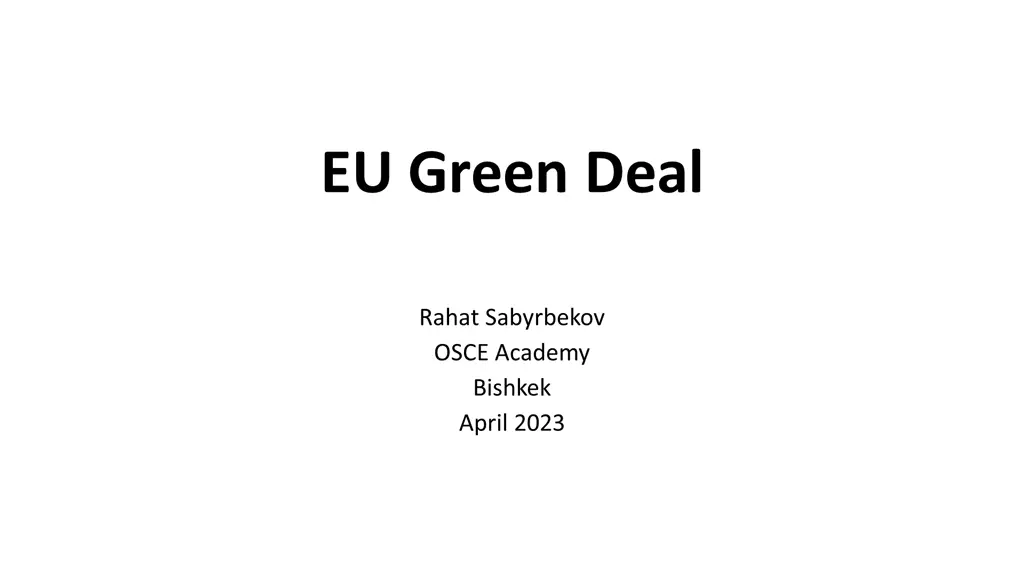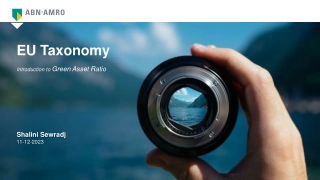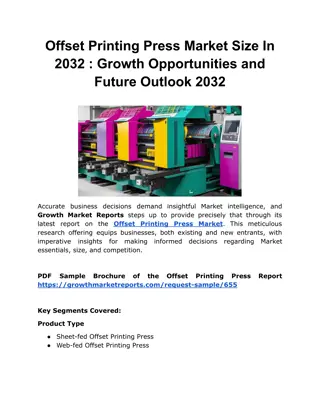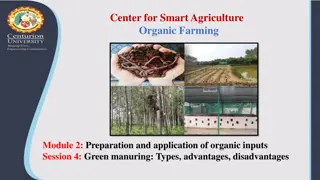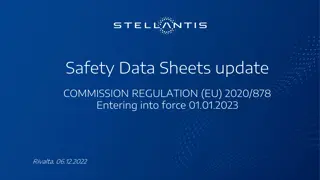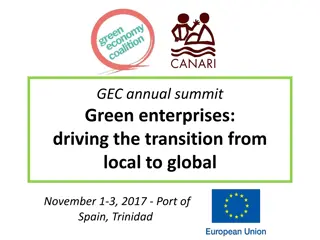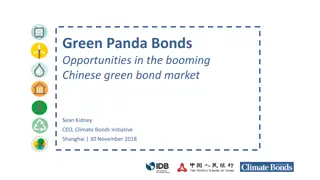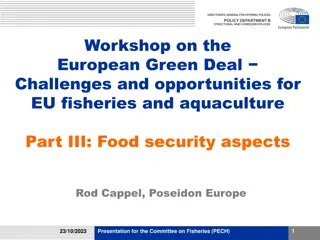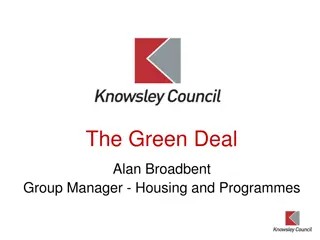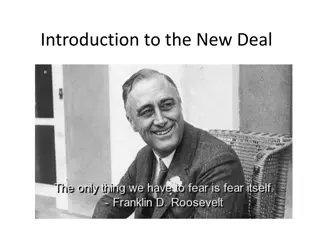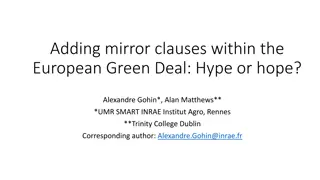EU Green Deal
The EU Green Deal is a strategic plan to make Europe the first climate-neutral continent by 2050. It aims to tackle climate change, biodiversity loss, and environmental pollution.
- EU Green Deal
- sustainable growth
- climate-neutral
- roadmap
- climate change
- biodiversity loss
- environmental pollution
Download Presentation

Please find below an Image/Link to download the presentation.
The content on the website is provided AS IS for your information and personal use only. It may not be sold, licensed, or shared on other websites without obtaining consent from the author. Download presentation by click this link. If you encounter any issues during the download, it is possible that the publisher has removed the file from their server.
E N D
Presentation Transcript
EU Green Deal Rahat Sabyrbekov OSCE Academy Bishkek April 2023
Communication from the Commission to the European Parliament, the European Council, the Council, the European Economic and Social Committee and the Committee of the Regions the European Green Deal, 2019 a new growth strategy that aims to transform the EU into a fair and prosperous society, with a modern, resource-efficient and competitive economy where there are no net emissions of greenhouse gases in 2050 and where economic growth is decoupled from resource use EU Commission, 2019
Introduction EU Green Deal is a roadmap for sustainable growth and development in the European Union Aims to make Europe the first climate- neutral continent by 2050 Launched in December 2019 by the European Commission Designed to tackle climate change, biodiversity loss, and environmental pollution
Cut greenhouse gas emissions by at least 55% by 2030 clear vision of how to achieve climate neutrality by 2050 Transform the EU economy to be more sustainable Shift to a circular economy that reduces waste and promotes recycling Increase energy efficiency and boost renewable energy use Protect and restore biodiversity and natural habitats Key Objectives
EU Green Deal parts DESIGNING A SET OF DEEPLY TRANSFORMATIVE POLICIES MAINSTREAMING SUSTAINABILITY IN ALL EU POLICIES THE EU AS A GLOBAL LEADER
1. 2. 3. 4. Increasing the EU s climate ambition for 2030 and 2050 Supplying clean, affordable and secure energy Mobilising industry for a clean and circular economy Building and renovating in an energy and resource efficient way Accelerating the shift to sustainable and smart mobility From Farm to Fork : designing a fair, healthy and environmentally-friendly food system Preserving and restoring ecosystems and biodiversity 5. 6. 7.
1. Pursuing green finance and investment and ensuring a just transition 2. Greening national budgets and sending the right price signals 3. Mobilising research and fostering innovation 4. Activating education and training 5. A green oath: do no harm
Actions Taken
Achieving the 55% emissions reduction target by 2030 will require significant efforts and investments Balancing environmental and economic interests Ensuring a just transition that supports affected communities and workers Overcoming resistance from member states and industry sectors Maintaining public support and engagement for the EU Green Deal agenda. Challenges
1. The EU will continue to promote and implement ambitious environment, climate and energy policies across the world. 2. The EU will continue to ensure that the Paris Agreement remains the indispensable multilateral framework for tackling climate change. 3. The EU will continue to ensure that the Paris Agreement remains the indispensable multilateral framework for tackling climate change. 4. Trade policy can support the EU s ecological transition. 5. As the world s largest single market, the EU can set standards that apply across global value chains.
Siddi, Marco. "The European Green Deal: Assessing its current state and future implementation." (2020).
Policy priority Maintaining priority in EU and national policy planning throughout the long period over which it will be implemented is the main overarching challenge for the Green Deal. COVID-19 shifted the policy focus *Russian war in Ukraine accelerated the energy transition
Financial endowment The Commission has estimated that achieving the current 2030 climate and energy targets will require 260 billion in additional annual investment. However, the actual need is much higher Overall, based on the figures and estimates that the Commission has published and the broader economic context, financial prospects for the Green Deal are not encouraging.
Competence of EU institutions Most likely, member states will be reluctant to relinquish additional sovereignty on decisions that affect the structure of their energy supply and the speed and cost of the energy transition. Based on past experience, some members will probably pursue more ambitious goals than those set at EU level, while others will be less ambitious with potential variations within each member state based on the political priorities of successive national governments. This suggests that the Commission s proposal to use delegated acts in pursuit of climate neutrality will face strong resistance from an informal coalition of EU members that are sceptical of or oppose the 2050 target
Conclusion The European Commission is continuing to pursue climate action in a challenging international setting, amidst growing geopolitical tensions, the rise to power of climate change deniers in major emitters, a pandemic and the ensuing economic slowdown. Most likely more financial resources will be required It can also make a fundamental contribution to climate action through technology and financial transfers to countries of the Global South
Thank you! Question? r.sabyrbekov@osce-academy.net
